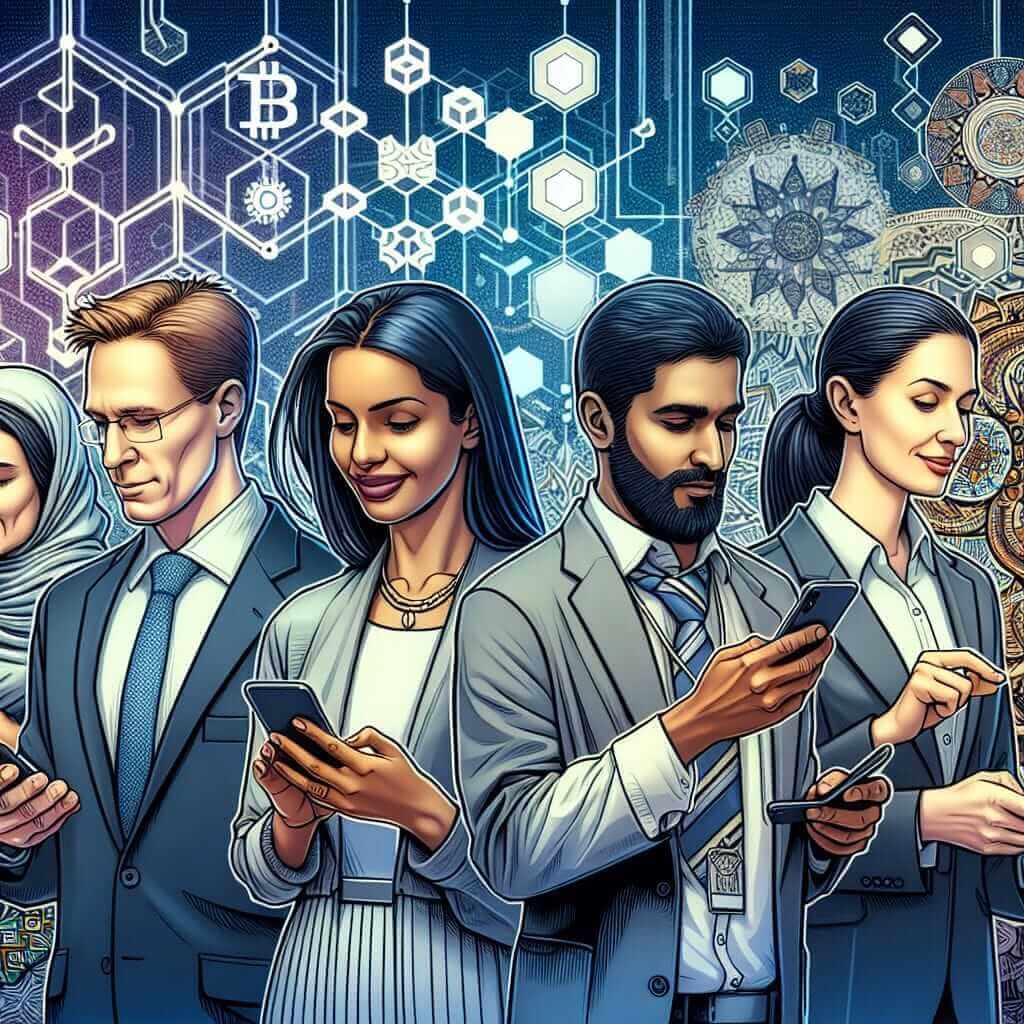The IELTS Reading section aims to assess various reading skills such as reading for gist, reading for main ideas, reading for detail, skimming, understanding logical argument, and recognizing writers’ opinions, attitudes, and purpose. One prominent topic that has gained significance and has appeared in previous IELTS exams is the impact of technology on financial inclusion. Given the increasing relevance of blockchain technology in contemporary discussions, this topic is highly likely to appear in future IELTS Reading tests.
Sample Reading Test
To help you practice, we provide a sample reading passage based on the topic “How is blockchain technology influencing global financial inclusion?” along with corresponding questions and answers. We have structured this sample as a ‘Medium Text’ to provide a comprehensive yet challenging reading exercise.
Reading Passage
Blockchain technology has emerged as a revolutionary tool that is transforming various sectors, including finance. By providing a decentralized, transparent, and secure method for recording transactions, blockchain offers numerous benefits that contribute to financial inclusion.
One of the key advantages of blockchain is its ability to lower transaction costs. Traditional banking systems often involve multiple intermediaries, each charging fees for their services. In contrast, blockchain can streamline transactions by eliminating these intermediaries, making financial services more affordable for individuals and businesses, particularly in developing countries.
Another significant impact of blockchain technology is its potential to provide financial services to the unbanked and underbanked populations. According to the World Bank, around 1.7 billion people globally lack access to financial services. Blockchain can address this gap by enabling peer-to-peer transactions and providing microloans through decentralized platforms, bypassing the need for traditional banks.

Transparency is another notable feature of blockchain technology. Each transaction recorded on a blockchain is immutable and can be publicly verified, reducing the risks of fraud and corruption. This level of transparency fosters trust among users and encourages participation in the financial system.
Moreover, blockchain facilitates secure and efficient cross-border transactions. Traditional cross-border payments can be time-consuming and costly due to the involvement of multiple banks and regulatory systems. Blockchain enables faster and cheaper international money transfers, benefiting migrant workers who send remittances home.
However, despite its potential, blockchain technology faces several challenges. Regulatory uncertainty, technological complexity, and limited public awareness hinder its widespread adoption. Governments and institutions need to collaborate to develop regulatory frameworks that support innovation while ensuring consumer protection.
In conclusion, blockchain technology has the potential to significantly enhance financial inclusion by lowering costs, providing accessible financial services, ensuring transparency, and facilitating cross-border transactions. Addressing the challenges will be crucial for realizing its full benefits.
Questions
Multiple Choice
-
What is one primary benefit of blockchain technology mentioned in the text?
- a) Increasing intermediary fees
- b) Lowering transaction costs
- c) Slowing down financial transactions
- d) Increasing regulatory complexity
-
According to the passage, how does blockchain help unbanked populations?
- a) By offering high-interest loans
- b) By eliminating financial services
- c) By enabling peer-to-peer transactions
- d) By increasing the number of traditional banks
True/False/Not Given
- Blockchain transactions are completely anonymous and untraceable.
- The World Bank reports that over 2 billion people lack access to financial services.
- Governments are actively collaborating to create supportive regulatory frameworks for blockchain.
Answer Key
Multiple Choice
- b) Lowering transaction costs
- c) By enabling peer-to-peer transactions
True/False/Not Given
- False (Blockchain transactions are transparent and can be publicly verified)
- Not Given (The passage states 1.7 billion people lack access, not over 2 billion)
- Not Given (The passage suggests the need for collaboration but does not confirm it is actively happening)
Common Mistakes
Students often misinterpret the transparency aspect of blockchain, believing it leads to anonymity. It’s essential to understand that while blockchain ensures privacy, it also maintains transparency by allowing public verification of transactions.
Vocabulary
- Decentralized (adj) /ˌdiːsɛnˈtrælɪzd/: Not controlled by a single central authority.
- Intermediaries (n) /ˌɪntərˈmiːdi(ə)riz/: Entities that act as a mediator between two parties.
- Immutable (adj) /ɪˈmjuːtəbl/: Unchanging over time or unable to be changed.
- Remittances (n) /rɪˈmɪtənsɪz/: Money sent, typically by a foreign worker to their family in their home country.
Grammar Focus
The Passive Voice:
- Usage: Often used to emphasize the action rather than the doer.
- Example from passage: “Blockchain transactions can be publicly verified.”
- Structure: [Subject] + [form of “to be”] + [past participle]
Conclusion
To achieve a high score in the IELTS Reading test, it’s crucial to practice with a variety of topics and question types. Focusing on contemporary and relevant subjects, such as blockchain technology and financial inclusion, not only boosts your knowledge but also prepares you for similar themes in the actual exam.
Tips for High Reading Scores:
- Develop Skimming and Scanning Skills: Quickly identify key information in the passage.
- Expand Your Vocabulary: Focus on improving your understanding of complex terms.
- Practice Regularly: Consistent practice with sample tests will enhance your reading skills.
By staying informed about current trends and practicing diligently, you can improve your performance in the IELTS Reading section and achieve your desired score.